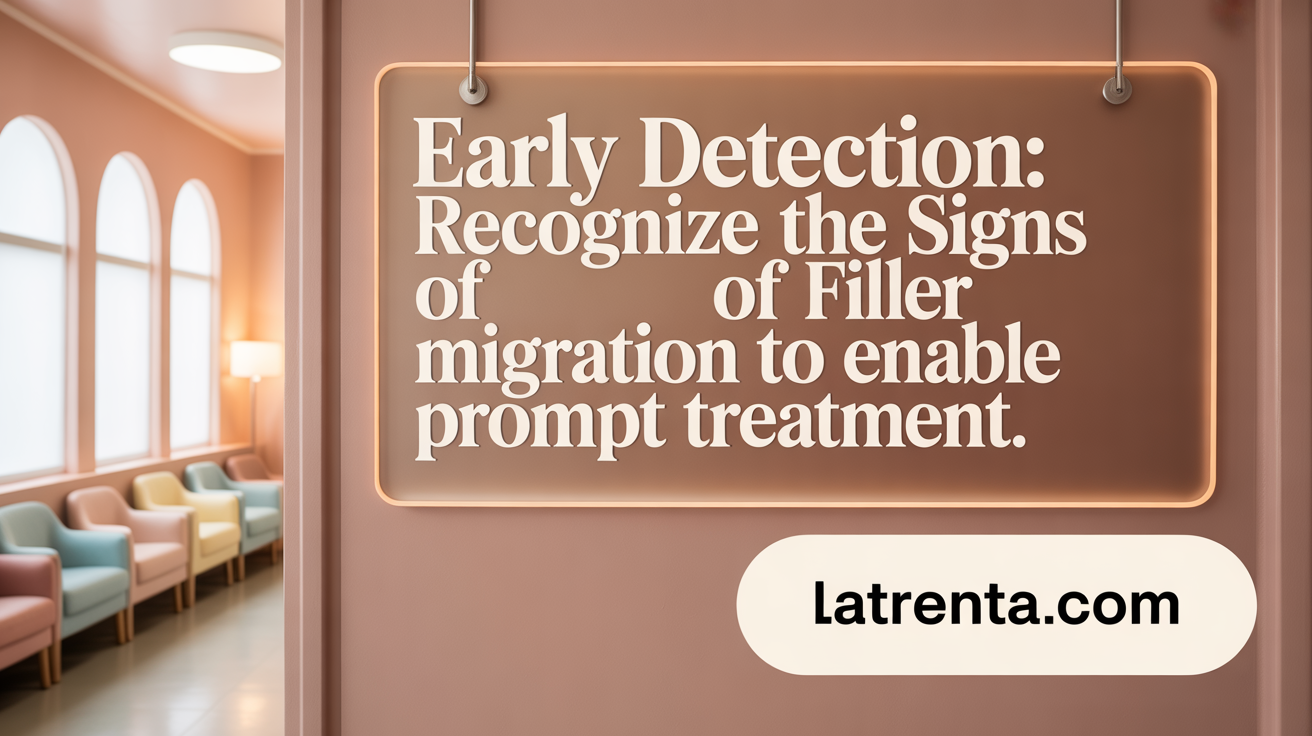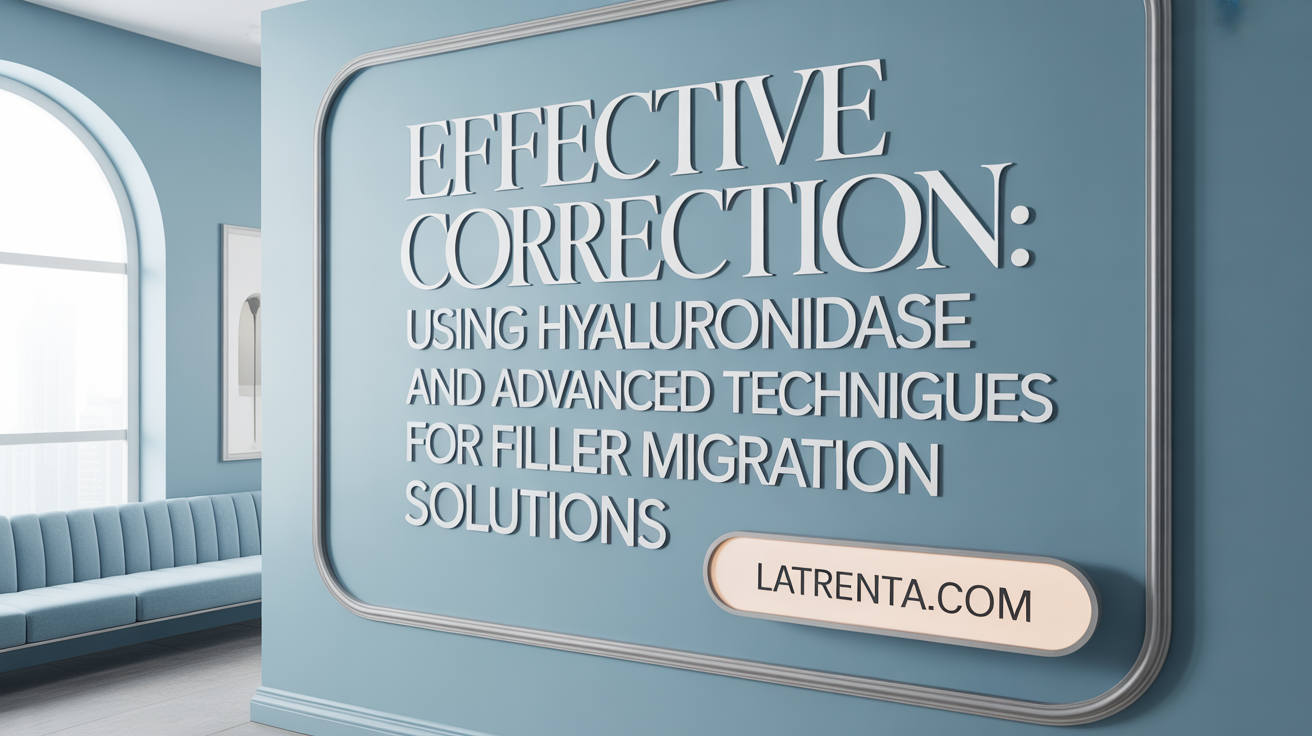Introduction to Filler Migration
Dermal fillers have become a popular and effective tool in cosmetic enhancement, offering natural-looking results with minimal downtime. However, one challenge that both patients and practitioners face is filler migration — when the injected material moves from its intended location, causing aesthetic concerns. This article explores the causes, prevention strategies, identification, and treatment options for filler migration, with particular attention to best practices for practitioners and supportive guidance for patients concerned about this complication.
What Causes Dermal Filler Migration? Understanding the Underlying Factors

What is filler migration?
Filler migration occurs when the injectable dermal filler moves from its initial placement to surrounding or unintended areas. This movement can lead to visible lumps, asymmetry, or unnatural contours, affecting the final aesthetic results.
Common causes of dermal filler migration
Several factors contribute to filler migration. Errors during the injection process, such as incorrect placement—whether too superficial or at an improper angle—can allow filler to seep into neighboring tissues.
Overfilling is another frequent cause. Injecting more filler than necessary or repeating touch-ups before the previous filler has settled can overstretch tissue and promote movement.
Using inappropriate or less viscous fillers, especially those that are soft and non-cross-linked, increases susceptibility to migration. These fillers are more flexible and can shift more easily if not carefully placed.
Immediate post-injection behaviors also matter. Excessive massage, pressure, or external manipulation right after treatment can displace the filler into undesired locations.
Tissue dynamics and individual anatomy play roles as well. Natural facial movements, muscle activity, and specific tissue properties can influence how the filler behaves over time.
How facial movement and anatomy influence migration
Facial expressions and movements, such as smiling or chewing, exert pressure on the injected area. If the filler is not secured properly within the tissue, these movements can cause it to shift.
Different areas have varying tissue densities and mobility. Mobile zones like the lips or around the eyes are more prone to filler migration due to frequent movement.
Types of fillers and their impact on migration risk
The choice of filler significantly impacts migration risk. Hyaluronic acid fillers, which are common and adjustable with hyaluronidase, vary in viscosity. Softer, low-viscosity fillers tend to be more prone to movement.
High G prime fillers, which are firmer and more cohesive, are better suited for structural areas to minimize migration.
Timing of migration occurrence
Migration can happen days to several months after treatment, with most cases seen within 2 to 6 months. Early detection is crucial for easier correction, especially with hyaluronic acid fillers that can be dissolved.
Preventing Filler Migration: Proven Techniques and Strategies

How can dermal filler migration be prevented?
Filler migration is a concern for many patients considering soft tissue augmentation. The most effective way to prevent it starts with the choice of a skilled, experienced injector. An experienced practitioner understands facial anatomy, proper injection depth, and the nuances of different fillers. This knowledge is crucial in delivering natural, long-lasting results without complications.
Proper injection techniques are foundational. Injecting at the correct depth—deep in the tissue for structural areas and more superficial for superficial lines—helps keep the filler in place. Using tools like cannulas instead of sharp needles can also minimize tissue trauma and reduce migration risk. Importantly, avoiding overfilling is essential; multiple small, conservative doses with adequate time between treatments give the body and tissues a chance to adapt, decreasing the likelihood of the filler shifting.
Selection of the right type and volume of filler can make a significant difference. For mobile areas such as the lips, softer, flexible fillers with high G prime (cohesiveness) are preferable, while more structured, firmer fillers are suited for deeper, less mobile zones like the cheeks. Choosing FDA-approved, high-quality products tailored for each specific zone helps ensure the filler remains stable.
Post-treatment care is equally important. Patients should follow detailed aftercare instructions, including avoiding facial massage, strenuous activity, heat exposure, and pressure on the treated area for at least 48 hours. Using ice to reduce swelling and inflammation, avoiding pursing lips or frequent facial movements, and limiting sun exposure assist in stabilizing the filler.
Gradual enhancement and conservative dosing are recommended strategies. Instead of a single large volume, incremental treatments allow the tissue to settle and minimize overcorrection or overfilling, which can cause migration. Regular follow-up visits enable providers to monitor results, address concerns early, and make adjustments if needed.
In essence, preventing dermal filler migration involves a combination of expert application, appropriate product choice, thoughtful patient management, and diligent follow-up care. When these principles are adhered to, the risks of migration are significantly minimized, leading to safer outcomes and higher patient satisfaction.
Recognizing the Signs of Filler Migration: Early Identification and Diagnosis
 Filler migration can manifest through various visible and tactile signs that a trained eye can detect. Common visual indicators include small lumps or bumps beneath the skin, uneven contours, or a distorted appearance in the treated area. For instance, in lip treatments, migration may appear as a "mustache" effect above the upper lip, or as bumps and rolled lips that disrupt natural lip borders. Puffiness extending into neighboring regions like the cheeks or chin can also point to migrated filler.
Filler migration can manifest through various visible and tactile signs that a trained eye can detect. Common visual indicators include small lumps or bumps beneath the skin, uneven contours, or a distorted appearance in the treated area. For instance, in lip treatments, migration may appear as a "mustache" effect above the upper lip, or as bumps and rolled lips that disrupt natural lip borders. Puffiness extending into neighboring regions like the cheeks or chin can also point to migrated filler.
Tactile signs involve feeling irregularities such as lumps, nodules, or uneven firmness where the filler was originally placed. In under-eye regions, migration might be noted as a discontinuity in the fullness, giving a “tootsie roll” appearance—where the filler shifts into unintended areas.
Specifically, lip filler migration often results in uneven lip volume, displacement that causes puffiness outside the normal lip line, or bumps that can feel bumpy or uneven. After the initial treatment, these signs are often subtle but become more noticeable over time.
Assessing these signs requires a thorough clinical examination. A knowledgeable practitioner evaluates the skin's surface, palpates for irregularities, and compares pre- and post-treatment anatomy. They look for asymmetry, unnatural fullness, or lumps that suggest filler has shifted.
Early detection of filler migration is crucial because it allows for quicker intervention, reducing the need for more complex correction procedures. Quick assessment often involves visual inspection combined with patient history about feelings of unusual fullness or asymmetry, and may require imaging or ultrasound in complex cases.
Consulting with a qualified professional who understands the signs of migration ensures accurate diagnosis and effective management. Recognizing these early indicators helps guide decisions on whether to wait for natural resorption or to use dissolving agents like hyaluronidase.
Corrective Treatments for Migrated Fillers: Hyaluronidase and Beyond

What corrective measures and treatments are available for filler migration?
When dermal fillers migrate from their original location, prompt correction is essential to restore facial harmony and prevent further complications. The most common and effective solution involves the use of hyaluronidase, an enzyme specifically designed to dissolve hyaluronic acid (HA) fillers. This enzyme works by breaking down the HA chains, allowing the body to resorb the unwanted filler.
In addition to hyaluronidase, other treatments can be considered based on the severity and type of filler used. Surgical options, such as minor excisions, may be necessary in some cases of severe or persistent migration, especially if non-HA fillers are involved. Manual manipulation or massage may help redistribute the filler or encourage its natural absorption, although these are less predictable.
Prevention remains vital. Selecting an experienced injector, utilizing proper techniques, and adhering to aftercare instructions help minimize the risk of migration. When migration is suspected, consulting a skilled professional promptly ensures appropriate intervention, often leading to more straightforward correction and better outcomes.
What is the role of hyaluronidase in managing dermal filler migration?
Hyaluronidase serves as a cornerstone in correcting hyaluronic acid filler migration. Its primary function is to enzymatically depolymerize the HA molecules in the migrated filler, effectively dissolving it. This rapid action allows for the quick alleviation of undesirable effects such as lumps, asymmetry, or puffiness caused by the displacement.
The procedure involves injecting hyaluronidase directly into the area of migrated filler. Results can often be seen within hours, with swelling and some tenderness usually subsiding as the enzyme acts. This makes hyaluronidase a versatile and safe treatment option when administered by trained practitioners.
Hyaluronidase not only dissolves the displaced filler but can also be used proactively during initial procedures to ensure optimal placement. Its reversibility and predictable action make it invaluable in managing filler migration, especially since hyaluronic acid fillers are the most common types associated with migration issues.
Overall, hyaluronidase offers an effective, minimally invasive solution that restores natural appearance quickly, with minimal downtime. It is particularly advantageous because, unlike some surgical approaches, it can be repeated if necessary, providing flexibility in correction strategies.
Timing and Decision-Making: When to Dissolve or Replace Migrated Fillers

When should a practitioner consider dissolving or replacing a migrated filler?
Dissolving or replacing a migrated filler is often needed when the aesthetic result does not meet the patient's expectations or if functional issues arise. Signs like asymmetry, uneven contours, or unwanted puffiness can indicate migration.
A qualified healthcare provider should evaluate the extent and impact of the migration carefully. If the filler has caused visible irregularities, such as lumps, bumps, or distortion of the natural anatomy, intervention is typically warranted.
Deciding to dissolve the filler depends on factors like the type of filler used—hyaluronic acid fillers can generally be dissolved with hyaluronidase. The decision is also influenced by the timing of detection. It is recommended to wait at least 14 days after initial treatment if swelling or inflammation is present, allowing tissues to settle.
In cases where the migration results in persistent unwanted effects, early intervention is advisable. If an asymptomatic or minor migration is observed, a period of monitoring might be acceptable, but prompt consultation with an experienced clinician is essential.
For patients seeking further enhancement or correction after dissolving migration, an interval of 2 to 6 weeks is advised. This waiting period enables tissues to recover, reducing the risk of further complications and allowing natural resorption to diminish the filler’s presence.
In summary, the decision to dissolve or replace migrated filler should be based on a comprehensive clinical assessment, considering aesthetic and functional impacts, timing of detection, and patient goals. Proper evaluation ensures effective and safe management tailored to each individual case.
Addressing Patient Concerns and Best Practices for Practitioner Prevention
What are the best practices for practitioners to prevent filler migration during treatment?
Practitioners can greatly reduce the risk of filler migration by employing careful, precise injection techniques. This includes selecting the appropriate needle or cannula size, angle, and injection pressure tailored to the treatment area. Ensuring accurate placement at the correct depth is essential. Limiting the amount of filler used at each session and avoiding overcorrection can prevent undue pressure or movement of the product.
Choosing fillers suited to the specific facial zones, based on their cohesiveness and firmness, also helps maintain the intended contour. A thorough assessment of the patient's anatomy, including palpation and multi-angle inspection, guides optimal placement. Post-treatment care plays a vital role; advising patients to avoid pressure on the treated area, strenuous activity, facial massage, or excessive facial movement in the initial hours and days supports stability.
Expert injectors often consider the use of hyaluronidase for early intervention if migration risk is suspected. Overall, combining technical skill, proper product selection, and patient education creates a safe and effective treatment plan.
Conclusion: Minimizing Filler Migration for Natural and Safe Results
Filler migration, while an uncommon complication when procedures are performed correctly, represents a significant concern for both patients and practitioners due to its impact on aesthetic outcomes. Understanding its multifactorial causes highlights the importance of expert injector skills, appropriate product selection, and vigilant post-treatment care. Early recognition of migration signs facilitates rapid and effective treatment, predominantly through the use of hyaluronidase in hyaluronic acid-based fillers. Patient education and setting realistic expectations around prevention and management are critical to ensuring confidence and satisfaction. By adhering to best practices and maintaining open communication, the risk of filler migration can be minimized, allowing for safer, more natural cosmetic results.
References
- Discover Filler Migration in 2025 and How to Prevent It - LA ViE MD
- Filler Migration: Causes, Prevention, and What to Do If It Happens
- Filler Migration: What It Is, Why It Happens, and How to Avoid It
- Lip Filler Migration: Causes and Prevention Tips - SEV Laser
- Understanding Filler Migration - Ryan Greene MD
- Fix Filler Migration in Markham, Toronto: Causes, Prevention
- Top 3 Mistakes That Cause Filler Migration—and How Nuage9 ...
